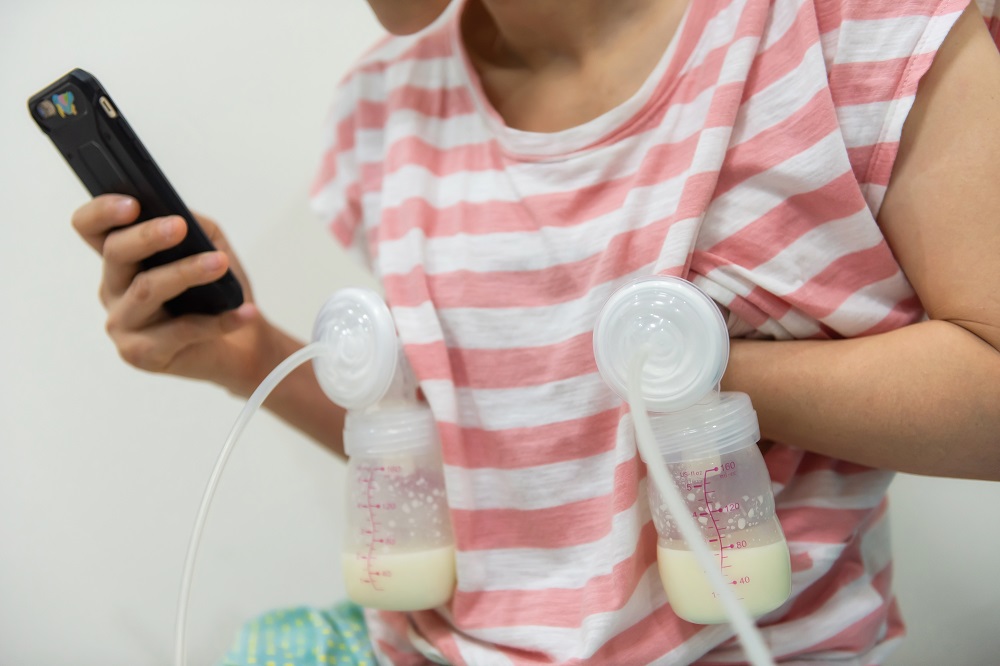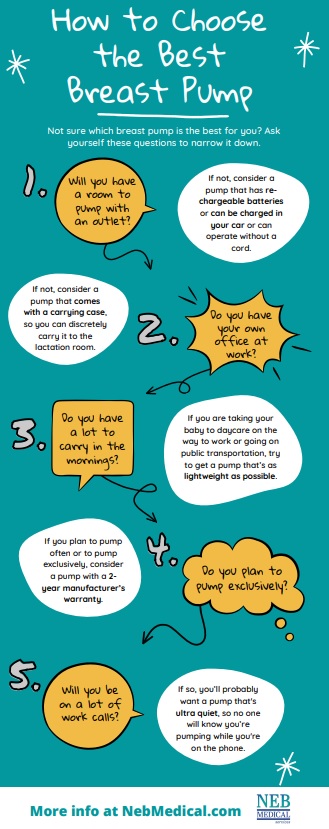When it comes to choosing a breast pump, we know there are lots of different pumps to pick from. And having so many good options to choose from can be very overwhelming and hard to know what pump would be best for you.
And unfortunately, you may not know what breast pump will be best for you until you start to pump.
However, there are a few things you should consider before your baby arrives that will help guide you towards choosing the best pump for you.
Here are seven questions to ask yourself when choosing a breast pump:
1. Is this your first baby?
If this is NOT your first baby, you will want to think about how things went when you were breastfeeding and pumping before. Take notes on things you either liked or didn’t like about the first breast pump you had.
Although some insurance companies only allow you to get one breast pump in your lifetime, most will allow you to get a new pump with each pregnancy. And since it’s likely been a while since you last got a breast pump, there are likely many new brands and models on the market to choose from.
If you did not breast feed at all with your first baby, or this is your first pregnancy, then you can start at question #2.
2. Do you have a room at work or school where you can pump with an outlet?
If not, consider looking for breast pumps that have either re-chargeable batteries or can be charged in your car or can operate without a cord. Although the pump suction will always be best when the unit is plugged into the wall or on full strength battery, it’s great to have the option to pump in your car when you need to, especially if you’re in a job or at a school where you don’t have access to a private room with an outlet.
Breast Pumps That Work with a Car Adapter (sold separately):
- Ardo Calypso
- Lansinoh Signature Pro and Lansinoh Smartpump
- Spectra S1, Spectra S2, and Spectra S9 Plus
Breast Pumps That Have Rechargeable Batteries:
Breast Pumps With a Long Battery Life:
- BabyBuddha – 3 hours
- Ameda Mya with Large Tote – 2 hours
3. Do you have your own office at work?
If you’re a manager with your own private door, hooray! You can probably find a place to stash your pump where people won’t see it. But if you aren’t lucky enough to have your own private office, you may want to consider a pump that comes with a carrying case, so you can discretely carry it from your cubicle to your lactation room a couple of times each day.
Breast Pumps With a Carrying Case:
4. Will you be taking your baby to daycare before you go to work?
If so, try to get a pump that’s as lightweight as possible. A 5 lb. pump may not seem like a lot, but when you’re trying to get out of the house with your baby, your diaper bag, your purse, your lunch AND your pump, you’re going to feel it. (Also, if you are schlepping a lot to and from work, you might want to consider buying a second pump just to have at work).
Breast Pumps That Weigh 1 lb. or less:
5. Do you plan to pump exclusively?
Most moms use an electric breast pump to pump during the workday when they are away from their baby. But some moms choose to pump exclusively (which means not nursing at all from the breast). This may be necessary if your baby has any health issues or if you experience any problems with getting your baby to latch correctly. If you plan to pump often or to pump exclusively, you might want to consider a pump with a good manufacturer’s warranty. Not all pumps are made for exclusive pumping, so take that into account.
Breast pumps with 2-year motor warranties:
6. Will you be on a lot of conference calls?
If so, you’ll probably want a pump that is ultra quiet, so even if you’re talking on the phone, no one will know you’re pumping at the same time. Just remember not to get on a video conference call!
Breast Pumps That Are Super Quiet
7. What is your nipple size?
How successful you are with pumping may have a lot less to do with the type of pump you choose and more to do with the size of flange you are using. Your output of milk will be much greater (and your nipples will thank you) if you are using a proper flange size. That’s why it’s helpful if the pump comes with more than one flange size or an insert so you can try out what works best. (Most pumps also have different size flanges available separately for purchase).To determine your correct flange size, hold up a ruler to your nipple and measure it’s width, not including the do not include the areola or outer edge in your measurement. One centimeter equals 10 mm, and the average flange size is 24 mm wide, but you can get flanges as small as 20 mm to as large as 36 mm, depending on the manufacturer.
Breast pumps that come with multiple flange sizes:
- Ameda Mya with Large Tote (24mm and 28mm)
- Spectra S1, Spectra S2 and Spectra 9Plus (24mm and 28mm)
Here at Neb Medical our customer service team is trained and ready to help guide you towards finding the best pump to fit your daily pumping lifestyle. Just give us a call and our customer service representatives can answer any questions you have.
(Click on infographic below to see it larger).



